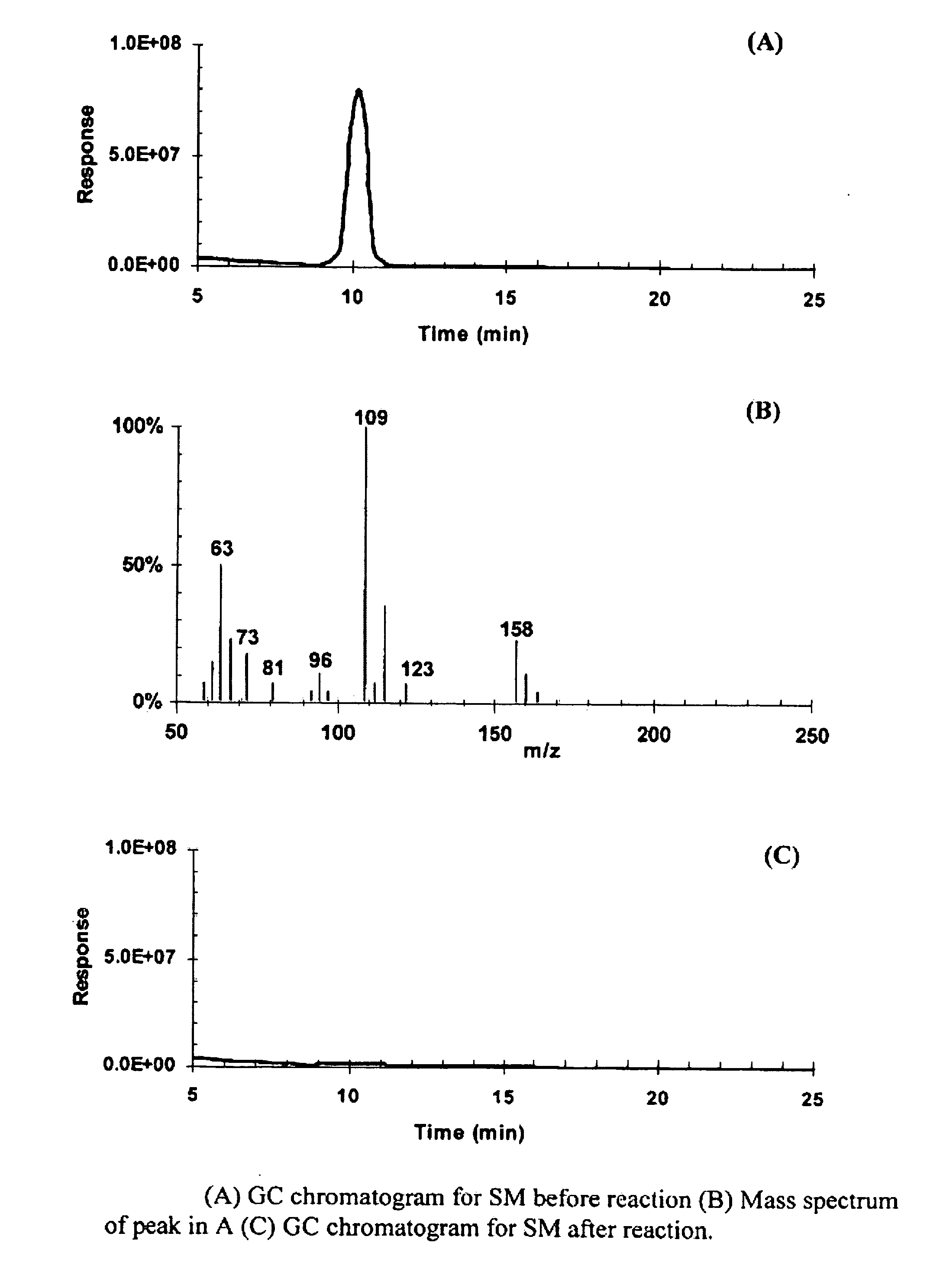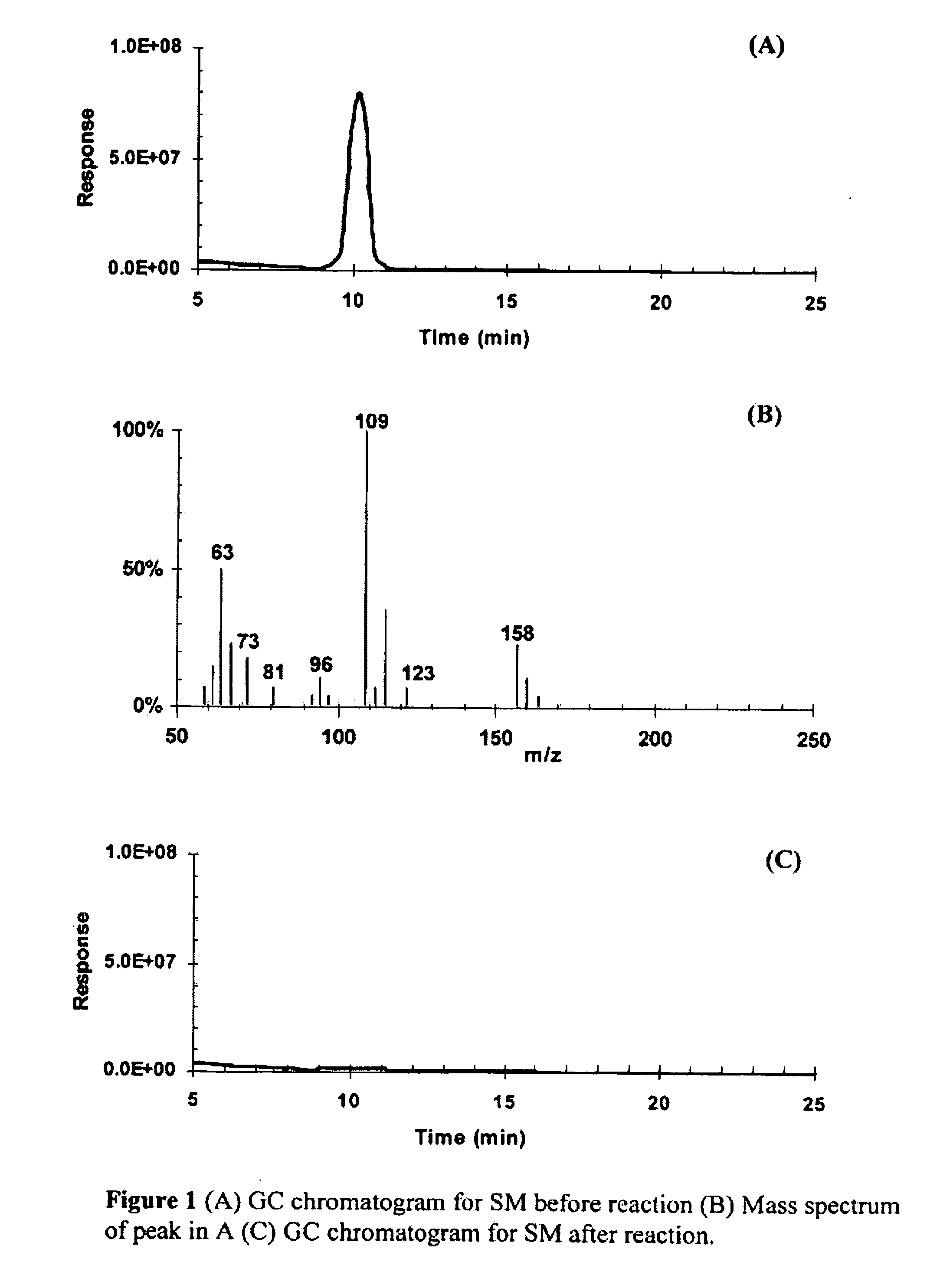Process for the destruction of sulfur and nitrogen mustards and their homologous/analogous at ambient conditions
- Summary
- Abstract
- Description
- Claims
- Application Information
AI Technical Summary
Benefits of technology
Problems solved by technology
Method used
Image
Examples
example 1a
[0062]About 0.01 g of sulfur mustard gas was added to about 10 g of 1-butyl-2,3-dimethylimidazolium bis (trifluoromethanesulfonyl) imide. The solution was stirred using a magnetic stirrer until all the added SM is dissolved. A sample of the solution was taken and dissolved in methanol and then analyzed using HPLC. Small amounts of potassium superoxide were added carefully to the solution under vigorous stirring. Samples from the solution were taken at different intervals and dissolved in methanol and then analyzed using HPLC. The height of the peak of the SM decreased as the added potassium superoxide increased. When the peak of the SMG disappeared, the solution was extracted using diethyl ether, evaporated under vacuum and then dissolved in methanol. The sample was then analyzed using GC / MS and as can be seen in FIG. 1 no peaks were detected. No peaks were detected for mustard gas or any known degradation products. Samples from the solution before extraction by ether were dissolved...
example 1b
[0063]The same procedure used in Example 1A was repeated except that the superoxide ion was generated electrochemically by the electrochemical reduction of oxygen dissolved in IL using a membrane electrochemical reactor. The working, reference, and counter electrodes were reticulated carbon, Ag / AgCl, and Pt mesh, respectively.
example 2
[0064]The same procedure used in Example 1A was repeated except that the IL used is 1-butyl-3-methylimidazolium bis(trifluoromethanesulfonyl)imide
PUM
 Login to View More
Login to View More Abstract
Description
Claims
Application Information
 Login to View More
Login to View More - R&D
- Intellectual Property
- Life Sciences
- Materials
- Tech Scout
- Unparalleled Data Quality
- Higher Quality Content
- 60% Fewer Hallucinations
Browse by: Latest US Patents, China's latest patents, Technical Efficacy Thesaurus, Application Domain, Technology Topic, Popular Technical Reports.
© 2025 PatSnap. All rights reserved.Legal|Privacy policy|Modern Slavery Act Transparency Statement|Sitemap|About US| Contact US: help@patsnap.com


